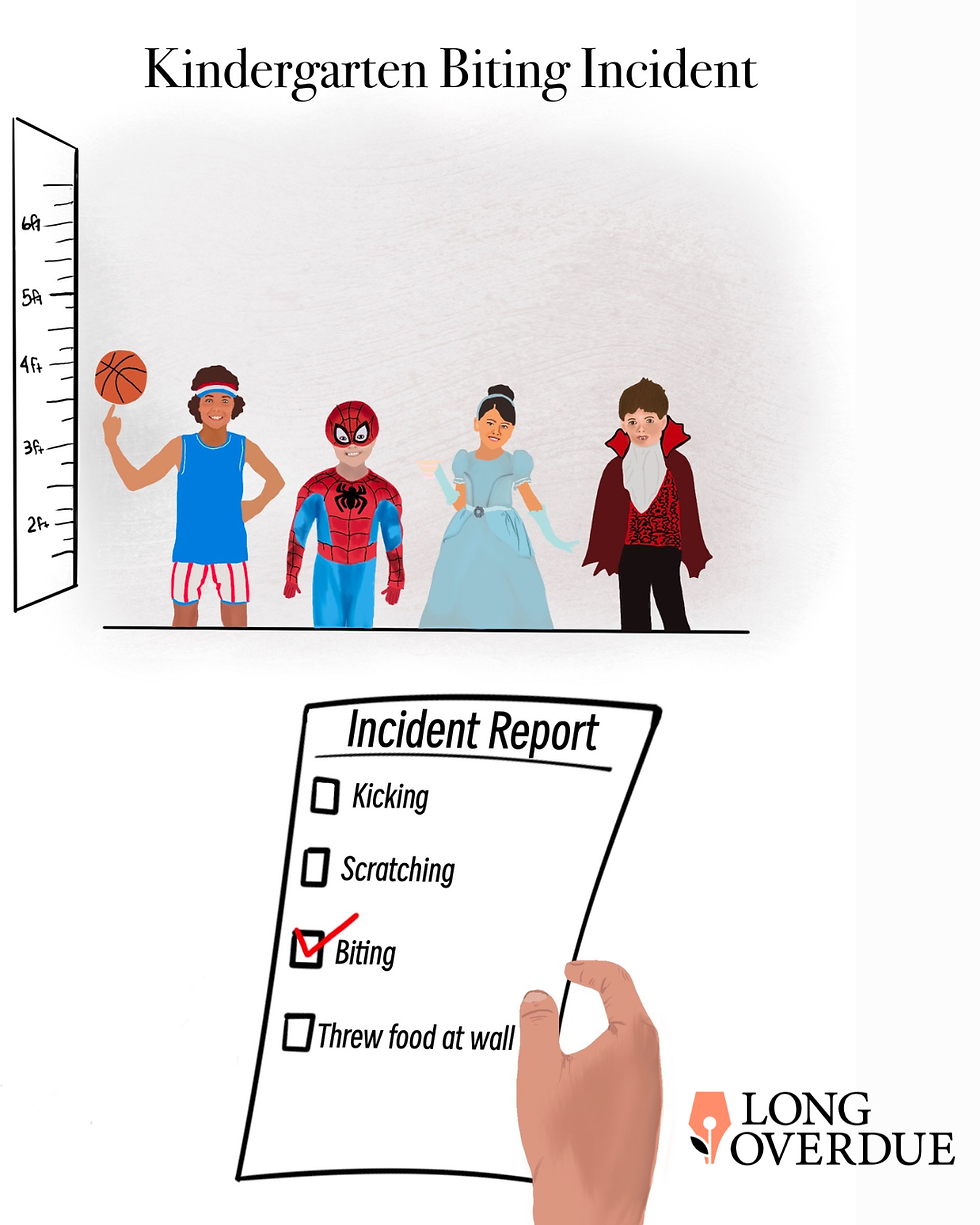Long Overdue Newsletter: April 2021
- Chris OBrien

- Apr 21, 2021
- 3 min read

That awkward moment when your dentist asks,
"How many times did you floss during quarantine?"
Quote of the Month

“So please, oh please, we beg, we pray, Go throw your TV set away, And in its place you can install A lovely bookshelf on the wall. Then fill the shelves with lots of books.”
- Roald Dahl
Creative Writing Lesson

With any iconic character, it's hard to imagine a time when they didn't exist, or existed in a different form. For example, we assume Woody and Buzz Lightyear were always... well, Woody and Buzz Lightyear. They were pulled off the creative shelf already assembled.
But take a look at this passage from Walter Isaacson's biography on Steve Jobs. Early on, Woody looked a lot different and the Pixar team was receiving conflicting notes:
Katzenberg's big push was to add more edginess to the two main characters. It may be an animated movie called Toy Story, he said, but it should not be aimed only at children. "At first there was no drama, no real story, and no conflict," Katzenberg recalled. He suggested that Lasseter watch some classic buddy movies, such as The Defiant Ones and 48 Hours, in which two characters with different attitudes are thrown together and have to bond. In addition, he kept pushing for what he called "edge," and that meant making Woody's character more jealous, mean, and belligerent toward Buzz, the new interloper in the toy box. "It's a toy-eat-toy world," Woody says at one point, after pushing Buzz out of a window.
Couple thoughts:
- During a rough draft, give yourself the freedom to evolve your main characters. How you picture them at the beginning will likely change by the end. You're still learning who they are as you write the story.
- When receiving notes, it's important to hear from multiple people in your Feedback Circle. If Pixar only heard Katzenberg's opinion, they might've created angry Woody.
Helpful character notes read something like this:
I'm having a hard time picturing this character. Who would they be in the office?
This scene, the dialogue didn't feel natural. Hard to picture them saying this line
Show me more. What's their family like? Where are they from? You mention this moment from childhood. Why not write that part out, add to the story
What are they doing, physically, during this scene. Expressions. Posture.
Even if readers/editors forget the name of your main character, or mix it up with a different character, that's actually a good note to have. It shows there's more development needed to make the character more memorable.
But when the notes are suggesting a complete character overhaul (let's make Woody mean and angry) with the rationale: "This is what your audience will want," be very skeptical. Don't ignore the note completely. Maybe test write a scene with this new approach. But ultimately trust your gut, protect your characters, and balance one person's note with 3-5 other people in your Feedback Circle.
Start with a Noteworthy Story

We've been thinking about this for awhile, how do we make the dream of writing a book feel less daunting. Because, right now, it feels like this:
"Hey, you want to write a book? That's awesome! Just sit down and write 80,000 words. Good luck out there!"
The idea we landed on is called "Noteworthy." The premise: Instead of thinking about a full book, just start with one Noteworthy story. Brainstorm. Write it down. Or hop on a phone call / Zoom call and retell it. Rinse and repeat then see what happens from there.
What does this look like in action? Recently, Mike Stevens in Michigan reached out to record an epic cross country skiing story from 40 years ago. Mike, Wayne, and Bob hopped on a Zoom call, retold the tale, and we created a magazine article as well as a podcast episode (you can download/listen by clicking the images below).
So, what's one of your Noteworthy stories? Feel free to contact us at library@longoverduestories.com

"I always say you should start with a good writing chair. That way, whether you write or take a nap, it's a good day."
- Crash, Team Dog
The best place to keep up with all things Long Overdue is via our monthly newsletter. And our Instagram page.
Also, the website - Long Overdue Books. The one-sentence summary: Long Overdue Books is a community for creating books. It's a place for authors, editors, artists, and designers to come together and move stories from rough draft to finished work.
Next newsletter - week of May 17th. In the mean time, if you have any questions, ideas, stories to tell, you can reach Cal the Librarian at - library@longoverduestories.com







Comments